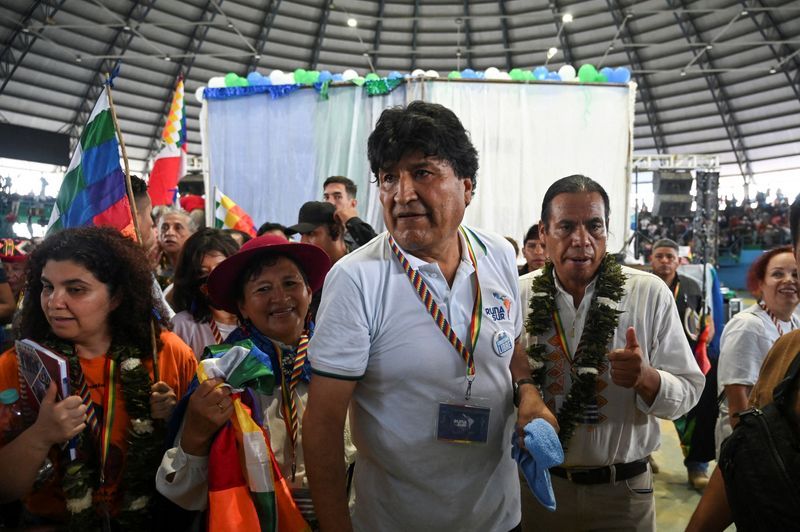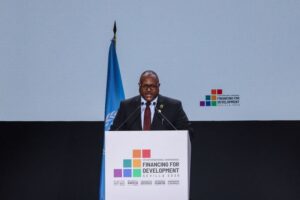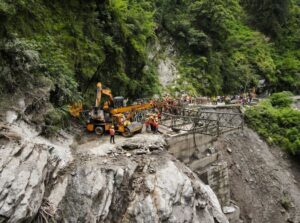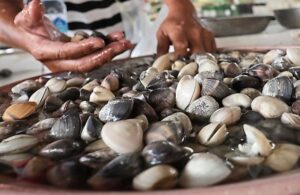
(Reuters) -Bolivia’s international bonds have rallied ahead of a fiercely contested presidential election, fueled by investors’ hopes that a political U-turn could help shore up the country’s fragile economy and pave the way for an IMF program.
The South American nation of 12 million people is engulfed in a crisis marked by inflation at a four-decade high, dwindling dollar reserves and a fiscal squeeze in which the government must choose to service debt or pay for fuel and food imports.
Bolivia’s international bonds, however, have enjoyed a stellar rally since the start of 2025. With a return of more than 30%, they are one of the top performers in JPMorgan’s emerging markets bond index, which across the asset class has returned slightly more than 7%.
Citigroup recently upgraded its assessment on Bolivian bonds to “neutral” from “underweight.”
Having started the year below 60 cents, Bolivian government bonds have scaled multi-year highs in recent days and are trading in the mid-70 cent range – well above the 70 cent threshold below which debt is seen as being in distress.
A change in government “is likely to be quite positive for the economy, which has been on an unsustainable fiscal and current account position for so many years,” said Carlos de Sousa, emerging markets debt strategist at Vontobel Asset Management.
“A restructuring could be avoided, particularly if the country gets an IMF program soon after,” de Sousa said, adding that turning to the International Monetary Fund for support would be a political choice.
Bolivia’s political landscape is dominated by a power struggle that has fractured the incumbent left-leaning Movement to Socialism (MAS) party. Polls show it winning about 12% of the vote in the first round of the elections on August 17.
Evo Morales, who ruled the country from 2006 to 2019 under the MAS banner, has been barred from running for another term as president.
Betting websites peg the chances of a win for center-right businessman Samuel Doria Medina, the National Unity party’s presidential candidate, at more than 50%. Favored by markets, he has pledged to restore central bank autonomy, tackle a dollar shortage and take on corruption.
To avoid a runoff, which has been scheduled for October 19, a candidate must secure more than 40% of the vote as well as have a lead of at least 10 percentage points.
IMF LOAN PROGRAM
The election is taking place at a critical time for Bolivia’s $50 billion economy.
Central bank-financed fiscal deficits have become a major flash point, revenues from gas exports – a big source of hard currency for the government – have dwindled and the central bank has been forced to spend precious reserves defending the boliviano currency’s peg to the dollar. The gap between parallel and official exchange rates has blown out to 80%, the IMF says.
Despite the recent spurt of optimism, investors remain worried that political infighting and falling gas export revenues could jeopardize the country’s ability to service upcoming debt payments – large chunks of which are due in the first quarters of the next three years.
Bolivia’s external debt amounted to about $13.3 billion by the end of 2024, of which $1.8 billion is in hard-currency bonds and the remainder in multilateral and bilateral loans, according to its central bank.
Foreign exchange reserves were at a record low of about $165 million in April, central bank data shows. JPMorgan calculates that the country’s liquid reserves are only $100 million. The IMF puts reserves at two months worth of imports – well below the minimum threshold of the equivalent of three months.
Earlier this year, the three major credit rating agencies downgraded Bolivia’s rating deeper into junk. S&P Global said the economic circumstances could impair the government’s ability to service debt over the next six to 12 months.
Some relief may come from loans worth more than $1 billion from official lenders like the World Bank and the Japan International Cooperation Agency that have been secured but not drawn down amid government infighting, and which analysts expect could be unlocked by a new government in La Paz. Monetizing Bolivia’s vast lithium deposits could also bring in financing.
But the real silver lining – at least for investors – would be an IMF loan program.
It would, however, require painful reforms. The IMF said in May that the Bolivian government should ditch the dollar peg, lift capital controls and phase out fuel subsidies, among a raft of other policy changes. It estimates Bolivia’s economy will grow 1.1% in 2025 and 0.9% next year – less than half the 2.2% growth expected across broader Latin America this year and the 2.4% forecast for the region in 2026.
With a balance of payments crunch looming, analysts say, the next government might not have much choice.
“All these liberalizing reforms will eventually allow the economy to flourish, but there’s going to be some short-term pain as you shut down money-losing businesses, cut fuel subsidies, and unshackle the economy,” said Ajata Mediratta, partner at Greylock Capital Management.
“Very few countries can do that in an election year.”
(Reporting by Johann M Cherian in Bengaluru and Rodrigo Campos in New York; editing by Karin Strohecker, Christian Plumb and Paul Simao)





